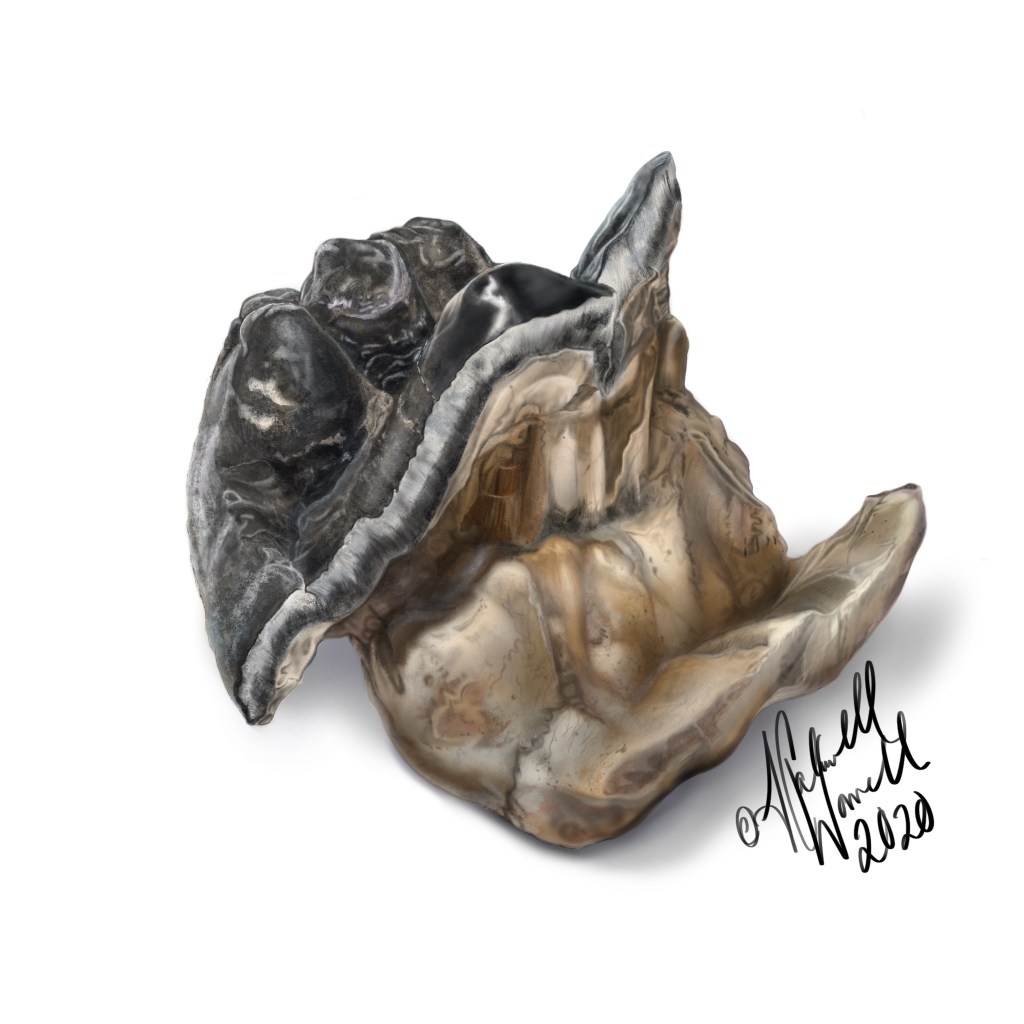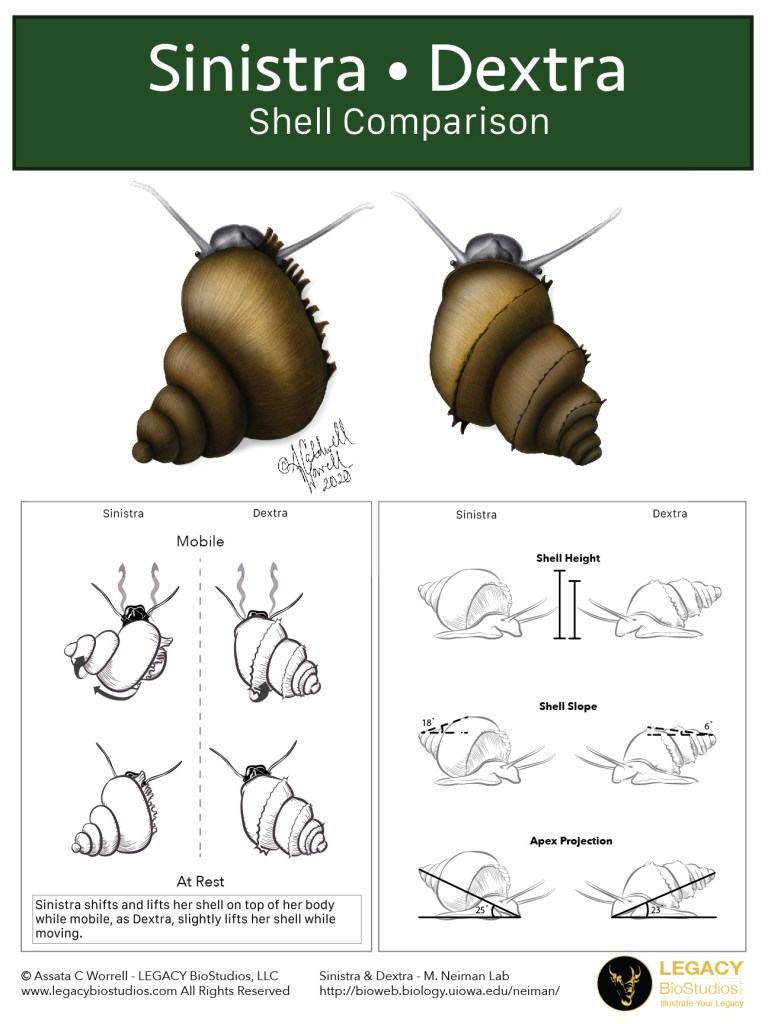The fields of art and the sciences are intimately combined. The detailed illustrations by artists and scientists, that back up years worth of scientific research describing new species, anatomy and behavior, complex processes, and new technologies, make a huge impact on the transfer of knowledge and understanding of these systems to interested parties. As an amateur illustrator, I have been interested in writing a post about historical scientific illustrators for a while now, but there is a more pressing topic that needs to be addressed. The recognition and endorsement of our black illustrators, both scientists and artists, both in the past and in the present.
The names and faces behind amazing scientific illustrations can sometimes be overlooked, as their illustrative work generally focuses on telling a story or clarifying research. This post began as a dedication to the recognition of black scientific illustrators who focused specifically on illustrating fishes, a topic more on theme with what the Fisheries Blog tries to highlight. My search for these illustrators was in vain, as I realized that after hours of online research, I was unable to come up with any names. I widened my search to incorporate black individuals who illustrate birds, reptiles, fossils, cells, anything…. Although I was able to pull a few names, both historical and current, the list is not long. I implore our readers to learn about these fantastic illustrators, their backgrounds, their illustrative focus, and to comment with names of individuals in the field I have most definitely missed.
HISTORICAL BLACK SCIENTIFIC ILLUSTRATORS
To begin, I am paying tribute to black scientific illustrators that are no longer with us. Most of these individuals were naturalists or scientists that had a hand in illustrating their own research. Each has a rich story, and although this post tries to recognize them, there are more in-depth articles on each person that can be found via other online sources.
Solomon G. Brown
Solomon Brown (1829 – 1906) was the first African American employee at the Smithsonian. Earlier in life, while working at the DC post office, Brown became acquainted with the Smithsonian’s first Secretary, Joseph Henry. Henry hired Brown as a general laborer at the Smithsonian, but Brown’s interest in the natural world led him to become friends with Spencer Baird, a naturalist and curator at the museum. Brown began working for Baird, and while doing so became educated in natural history and illustrated maps and specimens for both Baird and for himself. Even without a formal education, Brown was widely respected and even went under the designation ‘Professor Brown.’

George W. Carver
George Carver (~1860s – 1954) was an inventor, an agricultural scientist, and the first black student at Iowa State University. Carver studied art and piano at Simpson College in Indianola, Iowa. While there, he excelled at painting plants, and was encouraged by his art teacher to travel to Iowa State University to study botany. While at Iowa State, Carver received both his bachelors and master’s degree in plant modification, pathology, and mycology. He later went on to teach at Tuskegee Institute and develop techniques in crop rotation.

Carl Cotton
Carl Cotton (1918 – 1971) was a skilled artist a renowned taxidermist at the Field Museum in Chicago, Illinois. Cotton sought employment with the Field Museum after many years practicing taxidermy as a young boy. During Cotton’s youth, he would be frequently found stuffing animals such as squirrels and birds. Cotton’s first of employment at the Field Museum went unfulfilled, as there were no vacancies and most of the staff had either their doctorates or were of known scientific repute. Cotton sought employment as a taxidermist a second time, after a stint in the naval service. This time he instead asked to volunteer with the taxidermy staff and learn from them, especially in the techniques of preserving fish and reptiles. The staff at the museum soon learned of Cotton’s enthusiasm and passion for the work. He became very skilled, and his work spanned across many animal groups, even including fishes, which are thought to be some of the most difficult vertebrates to taxidermy.
CURRENT BLACK SCIENTIFIC ILLUSTRATORS
These black scientific illustrators are currently working to make a career of illustration. Although this post highlights their work, I suggest going to their individual websites, learning their stories, and commissioning them for some truly skilled illustrations.
Ed Bell
Ed Bell is an author and an illustrator. In addition to being a scientific illustrator he is also the current Art Director of Scientific American. Ed’s digital illustrations are both informative and captivating, and for decades Bell was responsible for how readers understood the complex scientific issues covered in the Scientific American. His illustrative work provides clarity and understanding to his scientific articles.
You can find Ed’s Illustrations on his website.
Shanfield McLeish Moyo
Shanfield is an illustrator from Zimbabwe who’s work focuses on photorealism. Although his work isn’t strictly illustration for scientific purposes, his attention to detail and precise work are immensely helpful in engaging people’s interest in art and in the organisms he depicts. Shanfield additionally engages audiences by posting time lapses of his work process.
You can find Shanfield’s work on twitter and via his instagram.
Jamey Redway
Jamey is a self-taught wildlife artist who mainly works with traditional ink and watercolor. She has a bachelor’s degree in BSC Wildlife Management and Conservation from the University of East Anglia, Norwich, Norfolk. Jamey is interested in understanding and capturing the movements and behaviors of various species of animals and capturing the unique characteristics of different animal species.
Jamey’s work can be found on her website.
Liz Wahid
Liz is an artist that focuses on scientifically accurate illustrations of birds. She has a bachelor’s degree in Animal Science from Cornell University and has a background in fine art. Similar to how many of us in fisheries feel about our fishes, Liz sees people’s curiosity for birds as both a way to connect people with nature but also as a driving force behind spreading interest in conservation.
Liz’s artwork can be found on her website.
Assata Caldwell Worrell
Assata is a fantastic scientific illustrator that focuses on creating illustrations that aid in effectively communicating complex concepts. As a child she enjoyed coloring the images in her mother’s text books, and while growing up she became interested in problem solving and the sciences. Assata went on to attend Iowa State University, and graduated with a degree in Biological Pre-Medical Illustration and a course schedule that included topics in both science and art. She is the founder of LEGACY BioStudios, LLC, where she works with clients, including scientists and medical professionals, to create illustrations that are informative and engaging. She says one of the most stressful parts of being a scientific illustrator is learning how to run a successful business.
Assata’s artwork can be found on her website.
A WORLD OF ARTISTIC TALENT
The number of black scientific illustrators continues to grow and their work deserves to be recognized. Some may only dabble in art on the side, while others strive to make a career of an activity they love. This post is only able to highlight a few individuals and the careers they have made after much practice and hard work. Below is a list containing more black individuals who work scientific art into their life. Click on their names to visit their websites and social media accounts. If you know of a black scientific illustrator not included in this list, comment with their name or website and I will be happy to recognize and include them.
Chelsea Connor
Natasza Fontaine
Courtney Pure
#SUNDAYFISHSKETCH
If you are interested in scientific art and illustration but have yet to participate in the #SundayFishSketch on twitter, please consider doing so. It is a growing community of scientists and artists alike that share a passion for both artwork and fishes. With its far-reaching artistic and scientific community, this hashtag may be a good place to start making connections and begin on a journey to a career in scientific illustration.




Amazing article! I love discovering other artists as obsessed with the natural world as I am. I wanted to give a shout out to Isabel Moughamian who is an Idaho native residing in Montana. She specializes in graphite and encompasses the bloom, hatch, whitening, and decay of organisms. Her primary focus at the moment are Western trout species.